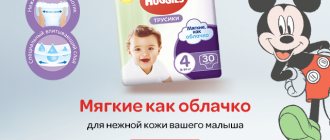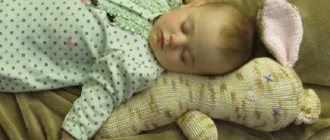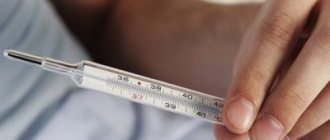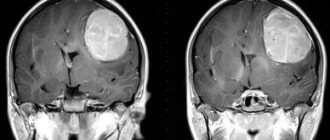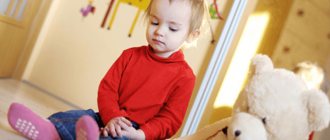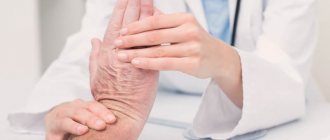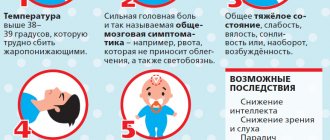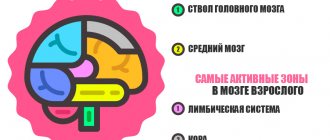Cerebral palsy, or cerebral palsy, refers to a whole group of diseases. These are conditions with impaired motor activity and posture. The onset of the disease is most often caused by a deviation in the formation of the central nervous system or injury. Cerebral palsy can be called the most common cause when a child develops a permanent disability. Statistics indicate the presence of cerebral palsy in approximately twenty people per 10,000 population. Can cerebral palsy be cured? Let's talk about this in the article.
Cerebral palsy is characterized by a whole complex of physical abnormalities, which may also be accompanied by mental disorders. One or more muscles become tight and affect the movement capabilities of the body or part of it. This is expressed in the appearance of reflex movements that cannot be controlled by the person himself. The degree of such deviations can vary: from slight to very severe, almost paralyzing the patient. Some patients have hearing loss and seizures.
Of course, a lot depends on the severity of the disease. But 100% of doctors are convinced that the patient and his loved ones can influence the level of recovery of health. This depends on how well and regularly clinical recommendations and rehabilitation procedures are followed. The Center for Aerospace Medicine used the innovative achievements of science working for the space industry to create equipment that could save or improve the lives of patients with cerebral palsy. We are talking about highly effective rehabilitation equipment .
When parents learn about their child's terrible diagnosis, many are unable to cope with the psychological stress. Our specialists will help families with special needs children learn how to live. Our simulators are designed using advanced technologies and scientific achievements of recent years, so they take into account the severity of the disease, the age of the child and his ability to adapt.
Causes of cerebral palsy
It is known for sure that the cause of cerebral palsy is a brain disorder. And no one will name the exact reason for this violation itself. The problem can appear during pregnancy or childbirth, and it can happen at the very beginning of the baby’s life – up to the age of three.
Why, when the baby is just developing in the belly of the expectant mother, can something go wrong and affect the formation of the most significant and complex organ - the brain? Unfortunately, there are plenty of reasons. Penetration of a dangerous infection into the body of a pregnant woman. Everyone knows that rapid infectious diseases can leave behind many unpleasant consequences. And a pregnant woman is not only exposed to danger, but also cannot always protect the developing
small organism. One of the common causes of congenital cerebral palsy is pathological genes. Heredity can play a bad role here. Well, complications during childbirth, when a healthy baby receives an injury that affects the blood supply or the brain itself, can cause an unpleasant lifelong diagnosis.
Another cause of cerebral palsy in children is prematurity. Babies who have not gone through the entire path of prenatal development with their mother are most susceptible to cerebral hemorrhages. These are intraventricular bleedings that can disrupt brain function. Premature babies are often born with underdeveloped brains. In addition, the white matter of the brain is most often affected by damage, or periventricular leukomalacia, in children born prematurely. In full-term infants, this pathology is very rare.
The brain of a baby between the ages of birth and three years can also be easily damaged. He is not yet able to resist dangerous infections or injuries. Thus, a state of hypoxia or physical trauma can affect the appearance of cerebral palsy syndrome in a child. Another dangerous disease that affects brain activity can be meningitis and its complications.
Symptoms of cerebral palsy in newborns
Signs of cerebral palsy develop gradually, so it is almost impossible to suspect disorders immediately after the birth of a baby. However, there are a number of symptoms indicating damage to one or another part of the newborn’s brain. Cerebral palsy is characterized by a division into three stages - early (from birth to 5-6 months), initial residual (from 6 months to 3 years) and late residual (from 3 years and older).
Diagnosis of cerebral palsy in newborn infants is based on signs characteristic of the early stage of development. These include:
- Pathological disorders and difficulties of the sucking and swallowing reflex. It is not difficult to notice such problems; they manifest themselves in the fact that the baby weakly takes the breast and does not demonstrate the natural desire for a newborn to suck. If the swallowing reflex is impaired, the child experiences difficulty swallowing - he chokes or the milk simply flows out of his mouth.
- Lack of response to sound starting at 1 month of age. With normal hearing development in a newborn, from 2-3 weeks after birth he begins to distinguish the mother’s voice, and by the first month of life he reacts to loud sounds. This reaction manifests itself in the form of facial changes, a sigh, or wide opening of the eyes. If this reaction is not present by one and a half months, then neurological hearing impairment is likely, as one of the signs of the initial stage of cerebral palsy.
- Lack of focused gaze after 2-3 months. By the end of the first month, the baby is already learning to focus his eyes on light sources; at 2-3 months he reacts to moving objects. Delayed development of the visual system may be one of the symptoms of cerebral palsy.
- Inadequate reaction to turning the baby onto his tummy, difficulty spreading his legs or turning his head. As a rule, kids love massage and gymnastics. If, during normal exercise for newborns, a child shows signs of restlessness and cries, this may mean that he is experiencing pain and discomfort due to improper development of skeletal bones and joints, as is often the case with cerebral palsy.
- The child takes unnatural and uncomfortable postures from the point of view of normal development. This symptom is characteristic of cerebral palsy, since initial pathological changes in the skeleton and joint contractures lead precisely to the adoption of strange body positions.
If a child of about 3 months shows a tendency to the same type of repetitive movements, then this can also be caused by the development of cerebral palsy. Subsequently, at the initial residual stage of cerebral palsy, such children experience a lag in physical and mental development - they do not hold their head up well, and for a long time they cannot learn to sit, stand, or crawl on their own. They retain the reflexes characteristic of newborns (grasping, palm-oral) much longer than normal.
How to avoid the risks of cerebral palsy during pregnancy?
Cerebral palsy is a common disease. And it is almost always difficult to pinpoint the cause. But medical statistics collected over many years of research have made it possible to identify risk factors that are determined during a woman’s pregnancy. These data made it possible to compile a list of recommendations for expectant mothers that will help minimize the risks of cerebral palsy.
Recommendations for pregnant women to prevent cerebral palsy:
- completely eliminate smoking and any type of alcohol, especially in the early stages of pregnancy, when the main formation of organs and the central nervous system occurs;
- eat well;
- avoid contact with toxic substances;
- Do not miss scheduled doctor visits.
Recommendations for newborns to prevent cerebral palsy:
- do routine vaccinations on time;
- avoid contact of the newborn with infectious patients;
- do not contact someone with meningitis;
- see signs of newborn jaundice in a timely manner;
- Avoid using substances that contain heavy metals.
Symptoms
How to determine cerebral palsy in newborns? It is necessary to observe the child to identify characteristic signs of the disease.
- The presence of two or more risk factors.
- Identification of developmental disorders.
- Pathological process in muscle tone.
- Lack of timely psycho-emotional development.
- Asymmetry of the child’s body and his movements.
- Various limb thicknesses.
- A violent movement. They are involuntary. They can be quick, sharp twitches or, on the contrary, wavy and slow. In the presence of stressful situations they intensify, with rest they decrease until they subside completely.
- Constant restless state of the baby.
- Sleep disturbance.
- Convulsive syndrome, which is characterized by shuddering and tremor.
- Blueness of the skin, possible marbling.
- Excessive sweating.
- Formation of strabismus, characterized by asymmetry of the pupils.
- The baby may make choking sounds regularly.
It must be remembered that the above signs may not always indicate cerebral palsy. There are a number of other pathologies with a similar clinical picture. In addition, the individual characteristics of the baby should be taken into account.
I bring to your attention the signs of cerebral palsy in a newborn child, photos of the disease:
Newborn with cerebral palsy
Manifestations of cerebral palsy in a newborn
Symptoms of cerebral palsy
It is clear that instantly diagnosing cerebral palsy in an infant is very problematic. There is no need to talk about impaired motor functions when they are not yet developed. It is inappropriate to say that a child cannot control his movements, because any child does not know how to do this and learns until he is 2–3 years old. As the child grows after one year, an attentive parent or nanny who spends a lot of time with the baby may notice deviations and delays in the development of skills typical for children of this age.
If the degree of brain damage is high, developmental defects will be noticeable immediately after birth.
And yet, there are some signs that may lead parents to think about the possible presence of cerebral palsy syndrome:
- very weak baby cry;
- constant disturbance of swallowing and sucking movements;
- periodic seizures;
- poses that are atypical for a certain age.
You should be alert when the baby is in a very relaxed state, the body seems to be like cotton wool. Or vice versa - hyperextension of great strength, when both arms and legs are scattered to the sides more than in healthy infants.
As the child grows, the pathological symptoms of cerebral palsy become more noticeable, even to the unprofessional eye of parents, so it is important to contact a pediatric neurologist in a timely manner in order to avoid serious complications in the future or to begin treatment as quickly as possible. In addition to the fact that the physical parameters of body development lag behind the age norm, signs appear that signal a problem.
Signs of cerebral palsy in young children:
- Limb hypotrophy. The child cannot fully control the muscles of the arms and legs; accordingly, they are motionless most of the time. The muscles do not develop and become flaccid and soft.
- The child's tactile and pain sensations may be inadequate and pathological. Thus, the pain can be felt many times stronger than in an ordinary person. Problems arise even with normal brushing of teeth or drying with a towel. And tactile associations may be completely incorrect: the patient is not able to distinguish between a hard and soft ball, a rough or smooth surface.
- Irritation of the skin around the mouth. Lack of control of swallowing and salivation provokes the constant presence of saliva in the mouth. This, in turn, causes skin irritation in the area of the mouth, chest and chin.
- Dental diseases. The inability to properly brush your teeth leads to tooth disease and gum inflammation. Children prone to seizures are prescribed medications against this disease. These medications also have an adverse effect on the condition of the gums.
- Injury in accidents. Of course, people who are unable to control their coordination are more likely than others to fall, hit door frames, pieces of furniture, etc. The occurrence of unexpected convulsions also provokes injuries from surrounding objects.
- Children and adults with cerebral palsy belong to the group of frequently ill patients. Their bodies are poorly resistant to somatic and infectious diseases. In addition, in particularly severe forms of cerebral palsy, even a cough can become deadly. While eating, a child who is unable to swallow normally may choke. Food particles entering the trachea provoke inflammation and pneumonia.
- All patients suffering from cerebral palsy have problems with poor posture and physical movements of the body. The problem with childhood is that this sign is difficult to identify in infants. And as the child grows and his activity increases, a brain injury received, for example, during childbirth, may worsen. The condition of this vital organ can change and complicate the development of cerebral palsy. That is why it is so important to detect a dangerous disease as early as possible and begin treatment and rehabilitation measures.
Signs of cerebral palsy in children under 12 months
It is not always possible to identify cerebral palsy by 6 months, because in addition to brain damage resulting from a head injury, the risk group includes premature babies and babies born with low birth weight. Sometimes cerebral palsy occurs due to complications during childbirth or a genetic predisposition. The first signs may appear by 10-12 months. For the age category up to 10 months, the first signs of cerebral palsy in a child will be as follows:
- The baby has problems while eating. It becomes difficult for him to swallow;
- At 1-3 months, the reaction to light worsens;
- Sometimes parents notice how their baby is lying in a clearly uncomfortable position;
- In infants, cerebral palsy manifests itself in increased muscle tone. Parents find it difficult to unfurl the baby’s legs or turn the baby’s head;
- At 4 months, the child’s perception of sound weakens. If you make noise next to him, he will not turn his head;
- Cerebral palsy in children at an early age can manifest itself in the form of periodically repeated head nodding. Sometimes he freezes in one position and does not move for several minutes;
- When you try to turn the baby onto his stomach, he begins to be capricious and cry.
Treatment can only be prescribed by a doctor. There is no need to self-medicate; you should consult with doctors to determine the extent of brain damage. The first step is to examine the baby. Over time, the symptoms will worsen, muscle weakness and delayed muscle development may appear. It happens that children with cerebral palsy are slightly behind their peers in mental and physical development, although developmental delay should not be confused with any pathology.
Even if it is confirmed that your child has cerebral palsy, remember - this is not a death sentence. Cerebral palsy is curable and that’s a fact. Our website contains many stories of people who have proven that cerebral palsy is not an obstacle to achieving goals and living a full life.
Forms of cerebral palsy
Patients with the same diagnosis – cerebral palsy – behave differently, they can have completely different levels of social activity and different quality of life, and their dependence on outside help can differ significantly. This depends on various factors:
- type of disease;
- severity of the disease and degree of brain damage;
- level of mental development;
- the presence of concomitant pathologies.
The concept of “type of cerebral palsy” defines a child’s motor disorders. There are spastic and complete cerebral palsy.
Spastic type
This type of cerebral palsy is the most common. It is characterized by the fact that only part of the body is subject to paralysis, but not the entire body. The pathology can be in only one arm or leg, the right or left half of the body, only the legs or part of the face. All options are individual. Experts define this condition as a stiff muscle that cannot relax. These may be the muscles responsible for swallowing, flexion and extension of limbs, and speech. Therefore, patients with spastic cerebral palsy walk strangely and with difficulty, they leak saliva, and their speech is slow and slurred.
Depending on how damaged the body is, the patient’s quality of life is determined. If both legs are paralyzed, the person may end up in a wheelchair. At the same time, he is able to speak, is mentally developed in accordance with his age, is able to study and even work.
When motor functions are limited in a small area, a patient with cerebral palsy can generally cope for the most part without assistance. In some cases, minor injuries can be treated. Or “smart” devices make it much easier to perform normal life functions. It is for these purposes that we have developed and created equipment that can bring the quality of life of a patient with cerebral palsy closer to the level of a healthy person.
Depending on the extent of damage to the body, several forms of spastic cerebral palsy :
- hemiplegia is a pathological condition of one leg and arm, only the right or only the left side of the body;
- paraplegia (diplegia) – impairment of the functioning of both upper or both lower extremities;
- monoplegia - paralysis of only one limb;
- quadriplegia is the most serious condition in which there is paralysis of all four limbs and, as a rule, the spine is affected (hence the swallowing disorder);
- Triplegia – three limbs are “faulty”.
Classification of forms of cerebral palsy
Depending on the main cause of cerebral palsy and the location of the brain tissue disorder, several forms of the disease are distinguished based on a number of signs:
- Spastic diplegia is the most common and common form of cerebral palsy. With this type of disease, there is bilateral impairment of muscle function, with the legs, arms and face to a lesser extent being more affected. This form is characterized by skeletal deformities and pathological changes in the joints. Spastic diplegia most often results from the birth of a child with significant prematurity. The disease is often accompanied by a sharp decrease in the motor function of all four limbs, sometimes with partial or complete paralysis (tetraplegia). Against the background of pathology of the cranial nerves, disturbances in speech, auditory and visual functions may develop. With this form of cerebral palsy, if there are no serious impairments in intellectual development and significant impairments in the motor function of the hands, children have the highest chance of social adaptation and self-care.
- Double hemiplegia is one of the most complex and severe forms of cerebral palsy; its development is most often caused by chronic fetal hypoxia during gestation or early infancy (birth trauma). With this form, disorders such as spastic paralysis of all limbs, severe deformities of the torso, and stiffness of the joints develop, which begin to appear at a very early age. Against the background of motor dysfunctions, in approximately half of the diagnosed cases there are serious mental development disorders - cognitive (poor memory, lack of ability to cognition, lack of ability to understand the surrounding world), speech, visual, auditory disorders, pathological changes in the facial muscles, weak swallowing, sucking, chewing reflexes. Often children with this form of the disease suffer from epilepsy. The prognosis for such patients is disappointing; pathologies of motor functions in combination with impaired mental development lead to an inability to self-care.
- The hyperkinetic form is most often caused by hemolytic disease of the newborn, which is caused by an immunological conflict regarding the Rh factor or blood group of the mother and child. In severe forms of the disease, the newborn becomes intoxicated with antibodies from the mother's blood directed against the child's red blood cells. The disease is characterized by excessive motor reactions of muscles, which are caused by impaired muscle tone. Skeletal deformities in this form of the disease are absent or mild. Children experience various types of hyperkinesis - involuntary movements from slow worm-like to fast intermittent, spasms of the facial muscles, cramps of the limbs. Muscle tone can be variable from lethargy and weakness at rest to hypertonicity when moving. Often, with this form of cerebral palsy, hearing impairment and pathologies of motor function of the eyes are observed. Intellectually, such children can develop within normal limits; only the verbal function of communication is impaired with severe dysarthria (impaired pronunciation, speech breathing, articulation, tempo-rhythmic organization of speech).
- The atonic-astatic form is most often a consequence of birth trauma, chronic hypoxia and fetal development abnormalities during pregnancy. In most cases, this form of the disease is caused by damage to the tissue of the cerebellum, sometimes to the cerebral cortex in the frontal region. Children with this form of cerebral palsy are characterized by symptoms such as very low muscle tone, inconsistency of movements, poor coordination, and poor ability to maintain balance when walking. Sometimes speech disorders and intellectual pathologies of varying severity are also observed - from mental retardation to severe forms of mental retardation.
- The hemiplegic form is caused by a hematoma or hemorrhage with damage to one of the hemispheres of the brain, against which unilateral damage to the limbs develops. Hemiparesis (muscle weakening or partial paralysis) of the limbs of the right or left side may be accompanied by spasms and convulsions. In most cases, the motor function of the hand is more impaired. Depending on the degree of damage to the cerebral hemisphere, pathologies of speech function and mental retardation may also be observed.
Non-spastic, or full type
This type of cerebral palsy includes conditions in which the patient is unable to live independently. Here we are talking not only about physical, but also about mental disabilities. This group of diseases includes both severe forms of spastic cerebral palsy and choreoathetoid. The following types of non-spastic cerebral palsy are distinguished:
- dyskinetic - a condition in which there is an increase in muscle tone, convulsions or slow movements that are not controlled by the patient are possible;
- hyperkinetic type - relaxation is observed during sleep with constant twitching, especially of the face (similar to grimaces), while awake this affects the inability to swallow food;
- ataxic type - rare - motor abilities of the whole body are impaired, involuntary uncontrolled movements involve the arms, legs and torso;
- mixed type - there are cases in which the patient has symptoms of more than one type of cerebral palsy (for example, if both legs are affected - diplegia - and uncontrolled facial expressions - dyskinetic cerebral palsy).
It is not possible to talk about what long-term motor abnormalities and the severity of convulsive seizures the patient will suffer in children under three years of age. Yes, and mental development disorders can also be identified only at school, when the child should already be able to fully use his intellectual abilities. With any form of the full type of cerebral palsy, there are deviations in mental development, even if they are very small. This is due to the inability to use the physical functions of the body to understand the world and master certain skills and abilities.
Another consequence of the presence of cerebral palsy - hearing loss - is difficult to recognize in infants, but mandatory audiometry is provided in the maternity hospital, which allows for timely detection of this deviation. However, at a younger age, an attentive adult can understand that in some situations the child does not respond to quiet sounds.
Even physically healthy people are susceptible to various psychological problems. But for patients with cerebral palsy it is much more difficult. They look different from everyone else, they move awkwardly and not very beautifully, they are not able to speak correctly. Therefore, more than anyone else, they need understanding and correct attitude from others.
The life expectancy of people with cerebral palsy can be very normal. It depends on the severity, shape and rehabilitation efforts applied. Special compensatory equipment can provide serious assistance in relaxing paralyzed muscles and developing partially or completely inactive muscles. Improving physical capabilities greatly affects mental development - the quality of life and its duration increase. Rehabilitation of children with cerebral palsy can be very successful if you have good equipment, an integrated approach, unlimited patience and perseverance of loved ones.
Signs of early manifestations of cerebral palsy
Manifestations of cerebral palsy include increased excitability and motor disinhibition of nerve impulses, excessive activity and restlessness of muscle reactions, which leads to involuntary and uncontrolled movements. Against the background of increased activity of one muscle group, stiffness and paralysis of other motor functions may occur. In addition, cerebral palsy is often accompanied by disturbances and disorders of mental reactions, provoking abnormalities in the development of speech, hearing, vision and functional disorders of the digestive and urinary systems. Cerebral palsy is often accompanied by seizures of epilepsy.
Symptoms of cerebral palsy can appear in a child immediately after birth, that is, in the first weeks of a newborn’s life. However, it often happens that the manifestation of signs of the disease occurs gradually, which significantly complicates the timely diagnosis of cerebral palsy. In order to take adequate measures to treat and help the child, it is important to recognize them as early as possible.
It is quite difficult to diagnose cerebral palsy in newborn children, therefore, if a child develops symptoms such as sudden convulsions, tremors in the body, sharp muscle contractions, or, conversely, extremely weak motor activity of the limbs, inability to fix his gaze, intermittent, tense or weak breathing, or impaired sucking reflex, parents need to consult a pediatrician and pediatric neurologist.
One of the first manifestations of cerebral palsy in infants is that they begin to develop natural abilities much later. Symptomatically this is characterized by the following signs:
- Delayed motor development - delayed emergence of the ability to raise and hold one's head, development of the skill of rolling over from back to stomach and back, lack of purposeful movements when wanting to reach an object (toy), late development of the ability to sit and hold one's back. In the future, children with cerebral palsy have problems developing the skills of crawling, standing and walking.
- Children with cerebral palsy retain the reflexes that are characteristic of early infants much longer. For example, this applies to a situation where a child older than six months has a grasping reflex. Normally, this reflex is no longer present in children 4-5 months of age.
- Muscle tone disorders. Very often, at the initial stage of cerebral palsy, phenomena such as excessive relaxation or, on the contrary, increased tension of individual muscles or muscle groups can be observed. With this condition of the muscles, the child’s limbs may take on an incorrect, unnatural position. Excessive muscle relaxation in cerebral palsy manifests itself in the inability of normal movement, dangling of one or more limbs, and the inability to maintain a natural body position. Increased tension leads to stiffness and persistent muscle tone, which causes the child’s body to assume a forced, unnatural position. A typical example of such a symptom is arms or legs crossed like scissors.
- Unilateral limb activity. This can be noticed when a child consistently uses only one hand for manipulation. With normal development, children under one year old, if they want to reach an object, use both hands equally, and this factor does not depend on which side of the baby’s brain is dominant. That is, it does not matter whether he is right-handed or left-handed, in infancy he uses both hands with equal activity. If this is not the case, then this factor in itself can be considered alarming.
At the early (up to 5 months) and initial residual (from 6 months to 3 years) stages of cerebral palsy, pathologies of muscle tone provoke disturbances in the child’s motor abilities. This is manifested by the following symptoms:
- Excessive sharpness and suddenness of movements;
- Uncontrolled and completely aimless movements;
- Unnaturally slow and worm-like movements.
Often, even in infancy, children with cerebral palsy exhibit pathological signs such as limb cramps and trembling of individual muscles. This type of disorder affects about 30% of children with cerebral palsy.
Diagnosis of cerebral palsy
Diagnosis in children of the first years of life consists mainly of careful observation of the child’s motor activity. Even healthy children develop differently, begin to walk at different ages, hold a spoon, speak... Therefore, some delays in mastering these skills can only indicate an individual development path. To diagnose cerebral palsy, if doubts arise, both laboratory and instrumental methods are used.
The set of diagnostic measures usually includes:
- Collecting detailed information about the baby’s medical history, starting from pregnancy and even before conception - the characteristics of family health. It happens that the parents themselves provide some information, or the kindergarten staff notices something.
- Special physical examination. Pediatric doctors can, with constant observation, determine the “normality” of a newborn’s reflexes. Other parameters are also assessed: hearing, posture, vision, muscle function.
- Analyzes based on certain parameters also help to establish an accurate diagnosis.
- MRI (magnetic resonance imaging) can identify significant brain pathologies.
If the sad diagnosis is nevertheless confirmed, the research does not end. Cerebral palsy is often accompanied by other diseases.
Many pediatric patients must undergo repeated examinations. This may include an x-ray to detect hip dislocations caused by increased activity and weight of the child. As a rule, between the ages of two and five years, children with cerebral palsy undergo several such scans. X-rays are also prescribed if indicated if the patient has pain in the hip area, since dislocations in this area are typical for patients with cerebral palsy. In addition, x-rays help identify spinal deformities.
As the child grows, the doctor and relatives observe his gait and posture. In cases of deterioration of these physical indicators, a repeat image may be prescribed.
The latest computer equipment facilitates a qualitative study of child motor impairments and diagnosis of the nature of motor pathology. The biomechanical hardware and software complex “Video Analysis of Movements,” developed and created by specialists from the Center for Aerospace Medicine, is capable of literally “seeing” all a person’s muscles and understanding how correctly they function. Since with this examination method the patient is not exposed to physical contact with any devices, his movements remain as natural as possible. Accordingly, the diagnostic picture is reliable, without distortion. The data on the average “correct” body movements entered into the computer program makes it possible to determine the degree of deviation of the motor functions being examined from the conventional norm. Such highly accurate and painless comprehensive diagnostics allows us to most likely develop a treatment strategy.
The use of a hardware-software complex is especially valuable in prescribing treatment for patients who have reached a plateau in their rehabilitation. When there is no improvement, it is important to understand in which direction you need to move forward.
Comparative periodic analysis using this equipment will help evaluate the chosen treatment and determine its effectiveness. Perhaps surgery will be recommended or the exercise routine may simply be changed.
Signs of cerebral palsy: photos
Parents may not immediately suspect their child has cerebral palsy, but the first signs usually become apparent already in infancy. It is extremely important to detect them at an early stage of the disease and show the baby to the doctor in time. As a rule, in the first weeks of life, cerebral palsy practically does not manifest itself at all, but the gradually developing nervous system creates the clinical picture of the disease.
Symptoms indicating cerebral palsy:
- Children's motor skills have a certain sequence of formation. In the second month of life, the baby can easily lift and fix his head in a supine position. If a child’s first motor skills are delayed in development, and the development of the speech apparatus is significantly behind, then this is a reason to sound the alarm. It is important for parents of such children to keep a diary in which important changes in the child’s life (the ability to roll over, hold up their head, smile) will be recorded.
- The child cannot roll over from his stomach to his back on his own.
- There are unconditioned reflexes that appear in children in the first days of life, which disappear over time. They are called newborn reflexes. So, with the palm-oral reflex, when pressure is applied to the child’s palms, he opens his mouth. When a newborn leans on his legs and is slightly tilted, as a result of which he takes a semblance of steps, then they talk about the automatic walking reflex. In most cases, these reflexes fade away in the second month of life. Reflexes that persist up to 6 months may indicate a dysfunction of the central nervous system.
- Indifferent attitude towards toys. A healthy child begins to show interest in toys starting at 3 months.
- Motor disturbance of the eyeballs, signs of strabismus.
- The baby may freeze in a static position for a short time or make uncontrolled movements, such as nodding his head.
- The child cannot crawl or move; he cannot hold objects in his hands.
- Weakness in the muscles of the upper or lower extremities.
- Increased tone or pathological spasticity.
- Muscle cramps.
- The newborn is not drawn to his mother, and lack of contact with her leads to early refusal of breastfeeding.
Treatment of cerebral palsy
Unfortunately, cerebral palsy is incurable. However, various means of rehabilitation and the use of many treatment methods help reduce the degree of motor problems and other abnormalities and significantly improve the quality of life of a person with cerebral palsy. If a brain injury has occurred, it will not grow or progress - it has already had its destructive effect.
But the inferior physical condition of the body can worsen if you do not fight to improve its functioning. The child grows, his body changes, hormonal changes occur - all this can have both negative and positive effects on his general condition.
Even treatment for cerebral palsy in adults is possible. After all, if a part of the body is under the influence of increased tension or uncontrollable spasms, the rest of the body is able to function normally and can compensate for the movements of the affected areas. And compensation equipment will help make unruly parts of the body work correctly. Thus, simulators for cerebral palsy practically put people on their feet and teach them to walk again.
Start of treatment
Cerebral palsy is not a death sentence. This is simply a feature of the functioning of the body. If a child is diagnosed with this, parents will have to learn to live with him and get the best out of life that is possible. The treatment will be lifelong. It should become part of the daily routine of the patient and his loved ones. The most effective method is physical therapy. Only constant and competent exercises can make unruly muscles work and prevent those that are most difficult to control from atrophying.
One of the most effective and popular means of proprioceptive dynamic correction is a therapeutic suit. Such suits were invented to develop motor skills in astronauts in zero gravity conditions. Later they began to use it as a highly effective means of rehabilitation of patients with cerebral palsy. They are suitable for people of any age, build, and degree of pathology.
The Regent therapeutic suit helps to actively restore walking skills for adults and children. It will not allow weakened, “lazy” and “disobedient” muscles to control human movements. The design allows you to set the desired angles in the joints to form the correct position of the limbs. The costume is affordable and should be in every family where there is a person with cerebral palsy. It is very convenient that the suit can “grow” with the child. Specialists from the Aviation Medicine Center will individually select the required configuration and teach you how to use this smart assistant.
Patients with lower extremity injuries will benefit from mechanical therapy using a plantar weight-bearing simulator. It looks like shoes that are connected to a device. The Corvit device, created by our center, does not have any negative side effects, is absolutely safe and easy to use. It helps restore the balance of strength between the flexor and extensor muscles, teach walking and maintain body coordination.
Drug therapy also exists. Some medications help reduce the symptoms of cerebral palsy and prevent the condition from getting worse. The most obvious treatment here is the use of antispasmodics and muscle relaxants. They relax cramped muscles and increase motor capabilities. A number of anticholinergic medications are designed to reduce drooling and improve movement of the arms and legs. If the patient has seizures, anticonvulsant medications are used as symptomatic medications.
The first signs of cerebral palsy: what you need to pay attention to
Prepared by: MedWeb
The first signs of cerebral palsy: what you need to pay attention to
The first signs of cerebral palsy: what you need to pay attention to
It is difficult to determine whether a child has cerebral palsy (CP) in the first year of life because its symptoms often become apparent later. However, it is possible to suspect severe perinatal damage to the central nervous system with a high risk of cerebral palsy by the end of the first six months of life. Making a diagnosis on time means starting treatment on time and significantly making the future life of a sick child easier.
discuss in the cerebral palsy community
Cerebral palsy, cerebral palsy, cerebral palsy and other paralytic syndromes, central nervous system, newborns (0-1 month), infants (1 month - 1 year)
If your pregnancy was not going well, if you have information that your child suffered complications during childbirth or in the first days of life, it is very important to systematically show him to a pediatrician and neurologist. It often happens that it is the parents, who are watching their baby’s development, who direct the local pediatrician to more careful monitoring and an early start of rehabilitation.
Naturally, parents will not be able to establish a diagnosis on their own. However, they can pay attention to some symptoms that indicate problems with the child's central nervous system. For example, a delay in the development of motor skills in a child and a delay in speech development are serious reasons for anxiety. So, in particular, by a month and a half, in a position lying on his stomach, a full-term baby is required to steadily hold his head up, and by six months, sit down. If a child does not hold his head lying on his stomach and in an upright position after 2 months, does not sit independently after 7 months, and does not walk independently after 15 months, it is necessary to find out the reason for the delay in the baby’s development and begin the necessary rehabilitation measures.
In addition to motor skills, it is extremely important to monitor the child’s mental and speech development, for example, visual and auditory concentration, humming and babbling, and interest in toys. To monitor the development of the child’s motor and mental functions, all parents can be advised to keep a diary of the baby’s development, which will indicate his main achievements.
In the first months of life in children with damage to the nervous system, the sucking reflex is often weakened. It happens that the child cannot close his mouth voluntarily or, on the contrary, does it with excessive force and bites the nipple.
From the point of view of neurology, there is a group of absolute reflexes that appear in a child after birth, and then gradually fade away, for example, the palmar-mouth reflex (when you press the palms of a newborn, he opens his mouth) or the automatic walking reflex (a baby leaning on his legs slightly lean forward, and he makes stepping movements). As a rule, these reflexes disappear in 2 - 3 months. If they remain for up to 4-6 months, then a dysfunction of the central nervous system can be suspected.
Parents can also pay attention to the fact that the muscles of the baby’s arms and legs are flaccid and weak or too tense (muscle hypotonia, hypertonicity, spasticity), trembling of the head, torso, arms and legs, difficulties in swallowing or sucking, excessive salivation, stereotypic and pretentious movements (the child freezes in a certain position for some period or makes involuntary movements, nodding his head), dominance of one side of the body when moving (uses only one hand, dragging his leg when walking), violation of consistency and accuracy movements.
If you notice such symptoms, you should immediately consult a doctor!
Source:
Methodological recommendations for parents about cerebral palsy, developed by the Scientific and Practical Center for Child Psychoneurology of the Moscow Department of Health.
The material used photographs belonging to econet.ru


